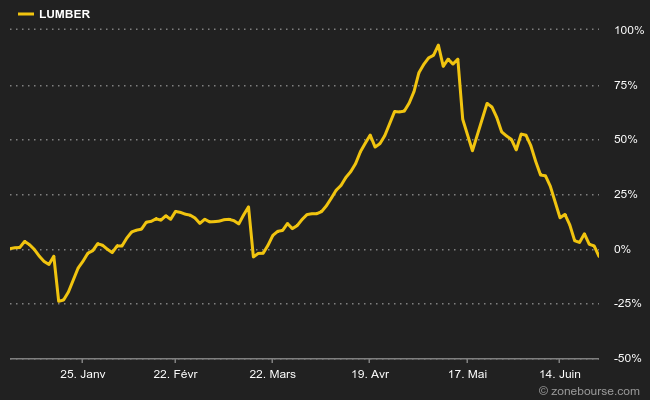Backlash. The price of lumber, which has been much talked about in recent months, is back to its levels of the beginning of the year. The market is easing as supply improves. Even though demand remains robust in the US, with housing starts stabilizing at high levels, the industry is maximizing capacity utilization to take advantage of the price surge. In other words, sawmills are running at full capacity, allowing supply to gradually adjust to demand.
The main players in the industry have been lining up in battle, including West Fraser Timber, Louisiana-Pacific Corporation, UFP Industries and Canfor Corporation, among the largest North American companies.
Lumber prices are easing as a result. After peaking at over USD 1600 per thousand board feet in early May, futures are now trading 50% lower at around USD 840.

Beijing is going on the offensive. After banning access to commodity markets for individuals, Chinese regulators have shifted into high gear to limit the surge in metal prices and the speculative bets that go with it. A series of measures have been taken, including investigations into malicious speculation in the cash markets, sales of strategic stocks to avoid shortages and other trade restrictions to limit price inflation.
These interventions apply to the market for iron ore, a key input in steelmaking, whose price has been rising steadily since April 2020. For the time being, these announcements have a limited effect on prices, which are still moving at high levels, above USD 200 per metric ton. It should be remembered that these high prices are a boon for the heavyweights in the downstream sector, notably Vale, Rio Tinto and BHP Group.
.png)

 By
By 











